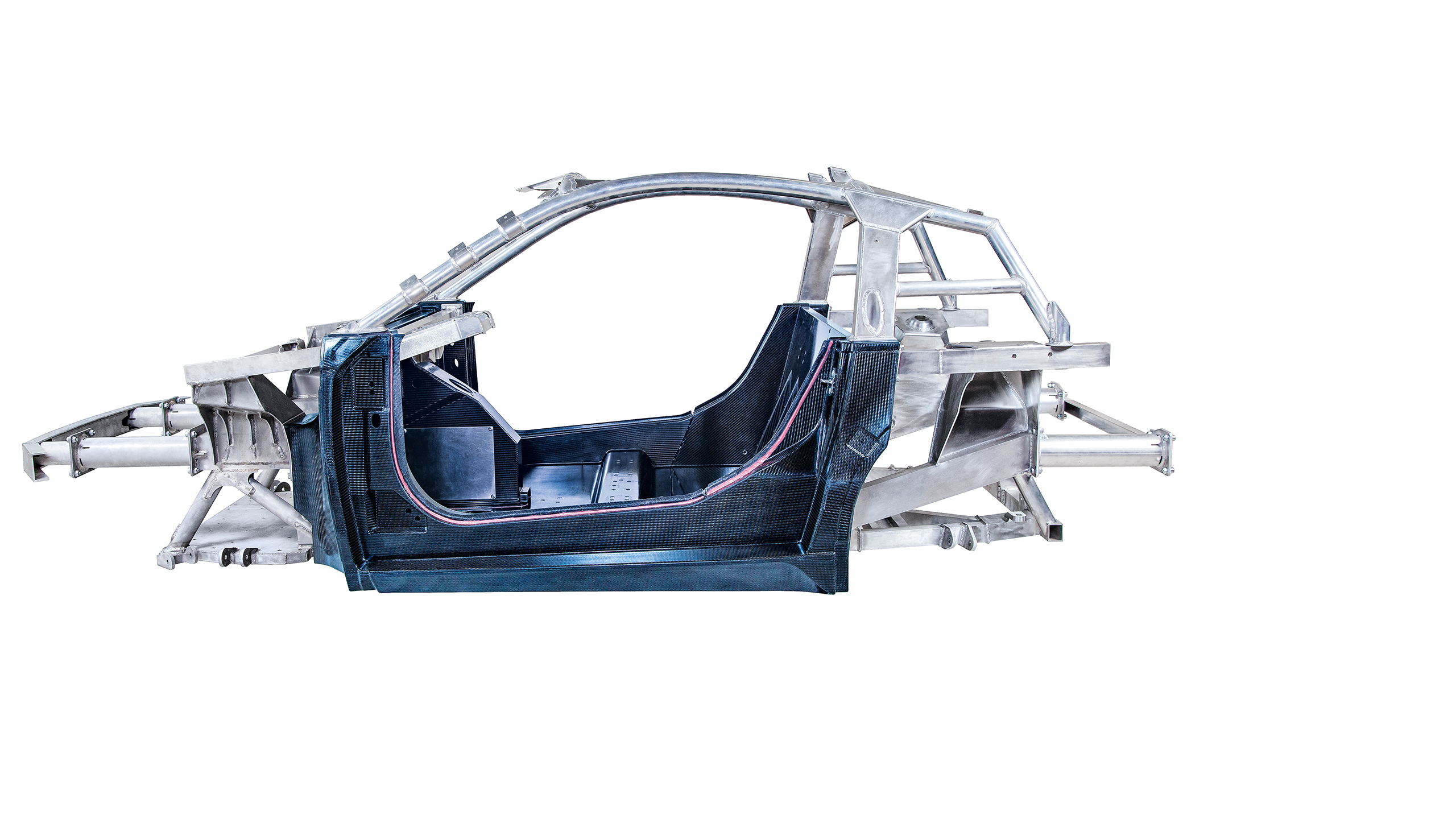It’s Not Easy to Lose Weight
New materials, optimized topology, integrated functions: IAV takes different approaches when it comes to lightweight design
Lightweight design plays an important role at IAV in many areas: in the bodywork for example, in the cockpit or in the vehicle chassis. Here is a brief overview of the various approaches.
Body development: lightweight material and lightweight design
Body development at IAV is currently dominated by lightweight design in mass production with high-strength and hot-formed steel, which can be used to reduce body weights by 10 to 20 percent. Furthermore, these materials are comparatively reliable in the production process and relatively low-cost. “We champion a combination of lightweight material and lightweight construction”, says Dr. Andreas Löffler, IAV Senior Vice President for Vehicle Exterior and Lightweight Design Technology. “The big advantage of high-strength steels is that the material properties and the material coefficients are known and easily reproducible.” Important aids include tools for virtual development and validation during early development phases, such as topology optimization for optimizing load paths to prevent superfluous use of material.
Components made of fiber-reinforced plastics (FRP) or hybrid parts made of FRP and metals are also interesting for body development. Besides inadequate material coefficients for FRP materials and resultant limited simulation forecasting quality, there are still many unanswered questions in terms of joining processes and new material pairs. On the other hand, there is greater potential here for saving weight. “Between 40 and 50 percent weight reduction is possible – but at far higher costs”, says Löffler. “Then there’s the carbon footprint across the whole lifecycle: it only makes sense to use FRPs if the total assessment of all individual factors is favorable, including weight, costs, processes and sustainability (life cycle assessment).”
IAV has acquired experience with CFRP, for example in the Visio.M project. The vehicle has a monocoque made of lightweight CFRP and has survived several crash tests without any problems. CFRP has also been used to develop, make and test an engine hood as part of an in-house development project. This composite material will also play an important role in the OHLF, in intelligent combinations with other materials.

Integrating functions into the cockpit
Cockpits can also benefit from lightweight design. “Autonomous driving plays a major role in this respect as it will eventually make the steering wheel superfluous”, says Uwe Reske, IAV Team Leader for Cockpit Integration and Load-Carrying Structures. “We already have to start redesigning the vehicle interior to get customers used to the new situation, with considerable changes to the functions and appearance of the cockpit.” As a result, there is less installation space available for the same functions, which in turn leads to more integrated functions. One example is a cockpit load-carrying structure that forms a kind of symbiosis in function and structure. Developers can achieve great weight reductions with intelligent structures and by using new materials, such as hybrid sandwich composites, fiber structures etc. “The future cockpit is facing huge challenges, with IAV playing an integral role.”
TRE: lightweight materials and concepts
The experts at IAV’s subsidiary TRE (Team Rosberg Engineering) are also closely involved with lightweight design. They were responsible for making the lightweight aluminum structures for the Visio.M. “We achieved considerable weight reductions compared to steel. However, the strength of some alloys is severely impacted during welding so that the welded assemblies have to go through subsequent heat treatment”, reports Axel Hoffmann, TRE head of chassis development and prototype construction. The experts are also familiar with composite materials such as CFRP and GFRP: they have already produced several battery housings and parts for the IAV electric motorbike from these composite materials.
Besides lightweight materials, they also champion lightweight concept design. One example is the development of a particularly lightweight switchbox for a high-voltage vehicle. “The original housing was made of aluminum with steel brackets”, says Hoffmann. “We integrated the bracket in the function of the housing itself, then manufactured the whole assembly with a vacuum infusion method, reinforced with aramid fibers. By combining lightweight materials with integrated functions, we managed to reduce the weight from three to less than one kilogram.” Here it is crucial to have precise knowledge of the loads on the part. A detailed simulation of the load conditions lets the development engineers save many kilograms with an optimized topology. However, great experience is needed for the model structure. It really isn’t very easy to lose weight.


